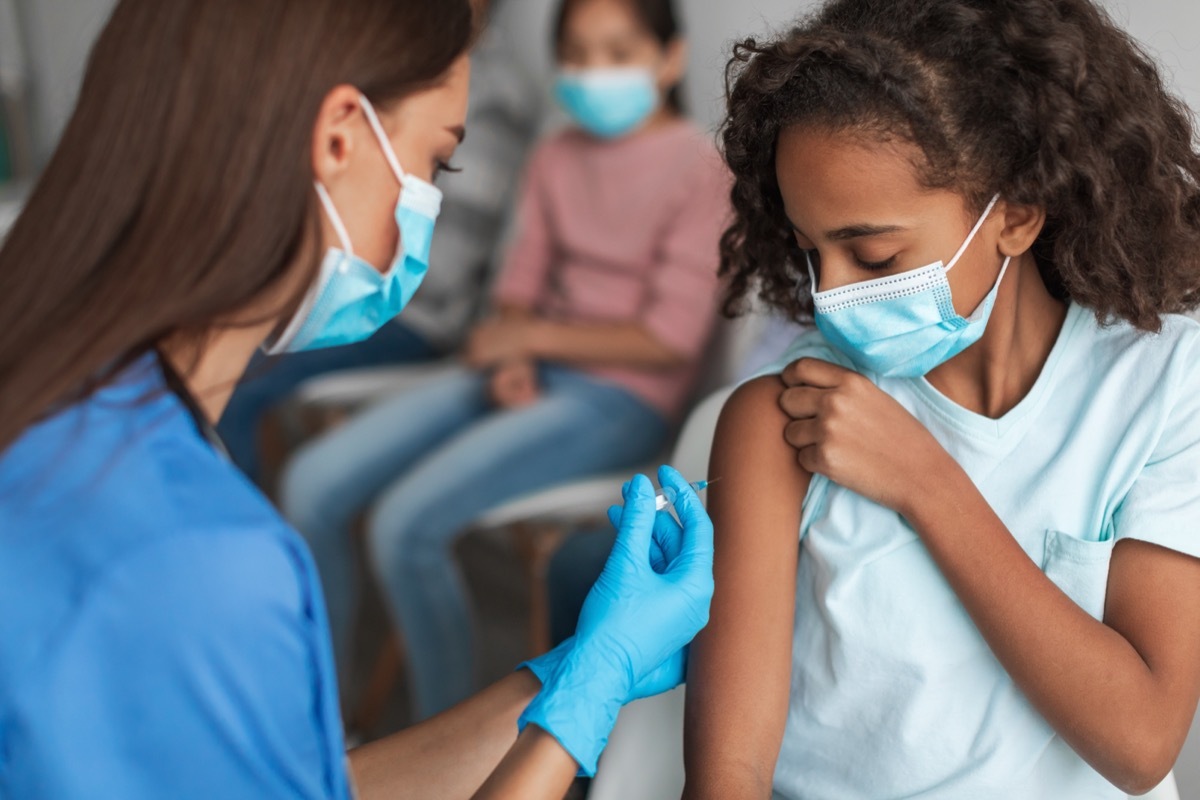90 porsiyento ng mga kaso ng cervical cancer ay may ganitong pangkaraniwan, sabi ng CDC
May isang madaling paraan upang maiwasan ang malubhang anyo ng kanser.

Cervical cancer is a serious disease that affects the cells in the cervix, the lowermost part of the uterus. Until recently, it was the leading cause of cancer deaths in American women, but strides in prevention and testing have helped boost current survival rates. Yet however far we've come in fighting this common cancer, experts say there's still progress to be made. That's because over 90 percent of cervical cancer cases are caused by one thing—and by addressing it, we could all but eradicate the disease from the U.S. Read on to find out what nine out of 10 cervical cancer cases have in common, and to learn how you can protect yourself from this life-threatening form of cancer.
Kaugnay:Two-Time Cancer Survivor Kathy Bates Warns Others Never to Do This.
Ninety percent of all cervical cancer cases are caused by HPV.

Human papillomavirus (HPV), a group of over 200 related viruses, is the most common sexually transmitted infection in the U.S., with over three million new cases each year. Though HPV can cause warts on various parts of your body, including the genitals, it can also be an invisible disease with no apparent symptoms.
When the Centers for Disease Control and Prevention (CDC) conducted a study using population-based data to estimate the percentage of cancers that are likely caused by HPV, they found that a shocking 91 percent of cervical cancer cases can be traced to HPV infection.
Experts say this statistic holds the key to preventing cervical cancer. If 0ver 90 percent of cases are caused by HPV, this means that nine out of 10 cervical cancer cases could be prevented with timely HPV vaccination.
Kaugnay:Eating This One Thing Can Cut Your Cancer Risk in Half, New Study Says.
HPV can cause six different kinds of cancer.

Though cervical cancer is by far the most well-known cancer caused by HPV, there are other five types of cancer that can result from an HPV infection: anal cancer, vulvar and vaginal cancer, penile cancer, and oropharyngeal cancer. Together, these account for 36,500 new diagnoses each year, meaning 33,700 cases could potentially be prevented with vaccination, the CDC says.
These numbers do not factor in another significant demographic: people with pre-cancer. The CDC refers to cervical cancer cases as "just the tip of the iceberg," estimating that that an additional 196,000 patients develop cervical pre-cancer each year.
The HPV vaccine is most effective during adolescence.

Experts say the best time to get vaccinated against HPV is in early adolescence. The CDC recommends that all children receive their first dose of the vaccine between ages 11 and 12, though it can be given as early as nine years old. A follow-up dose should be administered six to twelve months after the first.
The CDC's Advisory Committee on Immunization Practices (ACIP) also recommends the HPV vaccination for everyone age 26 years or younger if they were not vaccinated in childhood. For people older than 26, however, the advice is a little different.
"Vaccination is not recommended for everyone older than age 26 years," the CDC explains. "Some adults ages 27 through 45 years might decide to get the HPV vaccine based on discussion with their clinician, if they did not get adequately vaccinated when they were younger. HPV vaccination of people in this age range provides less benefit, for several reasons, including that more people in this age range have already been exposed to HPV."AE0FCC31AE342FD3A1346EBB1F342FCB.
If you haven't already been vaccinated against HPV, speak with your doctor to determine whether this vaccine is right for you.
For more health news sent directly to your inbox, sign up for our daily newsletter.
Getting regular screenings for cervical cancer is important.

There is no routine screening for many of the types of cancer caused by HPV, which are typically diagnosed once a patient begins to show symptoms. However, the CDC says visiting your gynecologist for regular Pap and HPV tests can help them identify cervical cancer or pre-cancers by alerting them to cell changes that have the potential to become cancerous if they aren't treated.
Experts say women should go for regular screenings starting at age 21, and continue to receive them every three years for as long as they turn up normal results. "Women ages 30 and over should have testing for the human papillomavirus (HPV) with their Pap smear," a method known as co-testing, says Johns Hopkins Medicine.
Sa wakas, siguraduhin na makipag-usap sa iyong doktor kung naniniwala ka na mayroon kang anumang mga sintomas na maaaring magpahiwatig ng cervical cancer o pre-cancer. Kabilang sa mga sintomas na ito pagdurugo sa pagitan ng mga panahon, mas mahaba o mas mabibigat na panahon kaysa karaniwan, nadagdagan ang paglabas, sakit sa panahon ng sex, dumudugo pagkatapos ng menopos, o pelvic pain, ayon sa American Society of Clinical Oncology (ASCO).
Kaugnay: Kung gagawin mo ito kapag natutulog ka, masuri para sa kanser, sinasabi ng mga eksperto .

5 metabolismo-boosting teas para sa pagbaba ng timbang

